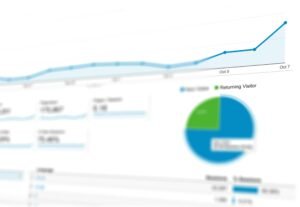Is your business prepared for the future of data analytics? 🌟
In 2024, data analytics will continue to reshape industries, driven by AI, Big Data, and emerging tools like low-code platforms. As technology evolves, so do the ways businesses leverage data to enhance customer experiences and make smarter decisions.
But what key trends should you be aware of to stay ahead of the competition? Let’s explore the top trends in data analytics for 2024 and how they’ll impact the business landscape.
Latest Trends in Data Analytics
AI and Big Data Revolutionize Customer Service
Artificial Intelligence (AI) and Big Data are transforming customer interactions in real time. Companies are now using AI to predict customer needs, while Big Data personalizes these interactions. This trend is reshaping call centers, where service reps know who you are and what you need even before you speak. The result? Faster, more personalized support.
The Rise of Low-Code and No-Code Tools
Low-code and no-code tools are democratizing data analytics, making it accessible to everyone. These tools allow non-technical users to perform data tasks without deep technical knowledge. The market for these tools is expected to grow by 23% from 2023 to 2030. However, while these tools simplify tasks, more complex evaluations still require human expertise.
Emerging Data Analytics Tools and Technologies

Businesses are adopting new tools and technologies to handle and understand data more efficiently. These innovations not only simplify data analysis but also empower teams to make faster, data-driven decisions.
Here are some notable technologies:
| Tool/Technology | Description | Use Case |
|---|---|---|
| MLOps Platforms | End-to-end platforms for managing machine learning models. | Streamlining the deployment and monitoring of ML models. |
| Sigma Computing | Alternatives for business intelligence and data analytics. | Empowering business users to analyze data without heavy coding. |
| Low-code Tools | Tools for building applications with minimal coding. | Allowing non-technical users to create data-driven applications. |
| Open Source Frameworks | Free tools for various data science tasks. | Facilitating collaboration and innovation in data projects. |
These tools are making data analytics more accessible, which helps businesses tackle complex challenges with greater efficiency.
Case Studies: Success Stories in Data Analytics
AI-Driven Customer Service
AI and Big Data are revolutionizing customer service. Imagine calling a company, and they already know your issue. This is happening now as AI predicts customer needs, and Big Data helps personalize solutions. Service is faster, and customers are happier.
Improving Public Transport with AI
Transport for Greater Manchester and National Express West Midlands are using AI to optimize bus routes and schedules. By analyzing traffic and passenger data, these companies reduce delays and improve efficiency. It’s a perfect example of how data analytics solves real-world problems.
Expert Opinions and Insights on Data Analytics

Expert Opinions and Insights on Data Analytics
What do industry experts think about the future of data analytics? Here are some key insights:
- Liran Hason, Aporia: Urges the need for comprehensive guardrails to maintain AI accuracy.
- John Clancy, Galvia: Recommends rigorous testing before deploying AI directly to customers.
- Yves Benchimol, WeWard: Highlights the importance of data-driven solutions in public health, focusing on combating inactivity.
These experts emphasize the need for security and accuracy in AI-driven data analytics, ensuring that businesses use these tools responsibly and effectively.
Regulatory Changes and Their Impact on Data Analytics
With growing data privacy concerns, regulations are tightening around data analytics. Here’s a brief overview:
- GDPR (General Data Protection Regulation): Governs data privacy and security in the EU.
- CCPA (California Consumer Privacy Act): Grants California residents rights over their personal data.
- Data Governance Act: Aims to facilitate data sharing while protecting privacy across the EU.
These regulations require businesses to invest in better data governance and security measures. Stronger compliance efforts are not just mandatory but also build customer trust, making data security a crucial trend in 2024.
Conclusion
In 2024, data analytics will continue to play a crucial role in business strategy. AI and Big Data are enhancing customer experiences, while low-code tools make data tasks accessible to everyone. Businesses that stay informed about these trends will have a competitive edge, leveraging data to make smarter decisions.
Stay ahead of the curve by embracing these advancements, and keep your business on the cutting edge of data analytics. 😊
FAQs
What is happening in data analytics?
AI and Big Data are enhancing customer experiences, and low-code tools are making data analysis accessible to non-coders. Data analytics is now crucial for business strategy.
What is the future outlook for data analytics?
The future of data analytics looks bright, with the rise of low-code/no-code tools, AI, and Big Data. These advancements will continue to drive innovation in business strategy.
Why do data analysts leave their jobs?
Data analysts often leave due to burnout, repetitive tasks, and lack of professional growth opportunities. The high-pressure environment of managing large datasets can also be a factor.
What are the top trends in data analytics for 2024?
Key trends include AI-driven customer service, the rise of low-code tools, a stronger focus on data security, and innovative tools that make data analytics more accessible.




